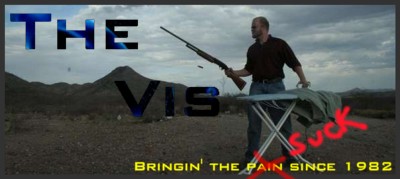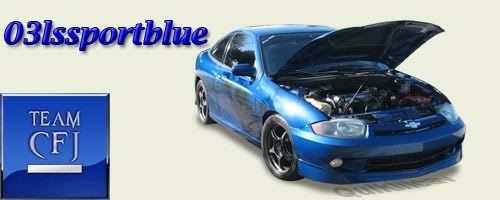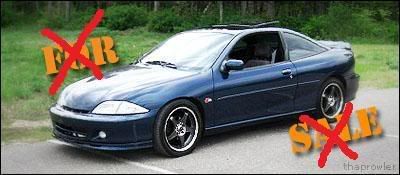Heres a quick rundown of how Frank and I whipped up a custom intake tube for his Cavalier.
Write up by Nigel
Photos by Frank and Nigel
After installation of his GM supercharger Frank was running a combination of his old AEM intake tube and a length of black flexible intake ducting, wrapped around the battery in a decidedly unappealing manner.

To the best of our knowledge there isnít an intake tube available for J-bodys running the GM supercharger. And even if there was, with the battery located where it is, thereís hardly room for any sort of proper intake ducting for even a naturally aspirated motor (in this writerís opinion), much less one under boost. Which left us with only one real option (and generally my favorite one): build our own.
I suppose aluminum would be the ideal material for an intake tube, as itís lighter and much softer than steel (which makes the finishing work MUCH easier). But as we had plenty of tubing leftover from building the exhaust system, and we werenít in possession of a TIG welder, we decided mild steel was our best bet.
First things first... that battery had to go.
We discussed relocating it to the trunk; which is certainly a viable option. However we didnít think the effort was worth it in this case, especially since we didnít have a battery box or roll of battery cable lying around. It looked like we would be able to slide the battery tray toward the firewall far enough to give us the clearance we needed.
Nothing is ever as easy as it seems.
Drilling out the seven spot-welds that held the battery tray down turned out to be about a half-hourís worth of drilling, prying, and grunting. Once it was out it still had to be straightened back out. The area under the battery tray was unpainted from the factory, so before continuing we sprayed it red to match the rest of the engine compartment.




The plan was to relocate the battery tray far enough back along the frame rail for our new intake tube to have a straight shot at the fenderwell opening. When we started test-fitting we discovered that the shift linkage took up a lot of the room we wanted to use for the tray. Itís possible that cars equipped with an automatic transaxle wouldnít have this problem, but for Frankís 5-speed Cavalier we would have to come up with something else.
After lunch we decided raising the battery tray an inch would allow us to locate the battery far enough back for the intake tube, and still give the shift linkage enough room to operate. A stray length of 1 square stock quickly found itself fashioned into a T shape and welded in between the frame and battery tray. The battery still had plenty of clearance between the hood and motor, and it didnít take much effort to re-route the battery cables.


The actual construction of the intake tube probably required more thought and spacial thinking than any other part of this project, however I find it to be the hardest to narrate. We started out by staring at the engine bay and scratching our heads. Once we had a couple ideas, we began mocking up the first bend.

We started the mock-up with an arbitrary piece of tubing extending from the throttle body toward the fenderwell. When I say ďarbitrary,Ē I mean we found it on the floor and it looked like a good enough place to start. It just so happened that this piece was the right length, and it was used in the final design.
After more staring and head scratching we pulled out a J-bend and looked at what sort of angles we needed to get through the fenderwell gracefully and then to where we wanted the airfilter.
Frank and I have cobbled together a few exhaust systems from mandrel bends. And I wish I could say we had some sort of beautiful measuring device or technique that we use to determine where to cut that J-bend to get the right angle. But Iíve found the best technique is to take your best guess based on what you see (any visual aids you can use for reference are helpful too), and plan on not getting it right the first few times.
So thatís what we did. We cut out a bend, test fit it, massaged it a bit with a file and tack welded it on. We got lucky and our first set of bends were on the money. We used a bolt conveniently located in the fender area as a mounting point to hold the tube rigid.



At this point it was just a matter of finishing the welds and cleaning them up. Since this would be on display in the engine compartment we ground the welds flush to give it the appearance of being made from a single piece of pipe. Which actually proved to be quite a chore.


One thing youíll find if you look at enough different mandrel bends is that they are not all created equal. In theory a mandrel bent tube will retain virtually the same cross-sectional area as a straight tube of the same size. Whereas a compression bend becomes distorted and loses some of its cross-sectional area. This makes mandrel bent exhaust and intake systems much better for high-performance applications because you can ensure a fairly consistent path with few restrictions... Not because they look nice (but that helps too). But if the machine making the mandrel bends has excessive wear or isnít calibrated properly, the bends it produces will be of lesser quality and be slightly distorted. Whereas a properly calibrated setup will produce much nicer bends with uniform shape.
In all honesty I donít think anything short of a genuine balls-out competition application really needs those perfectly round mandrel bends. And if youíre reading this you probably donít drive one of those. As for me, I donít mind paying a few bucks less for sub-perfect bends. Especially when Iím buying a ton of them. My shoddy welds will probably put more restriction in an exhaust system than the slight change in cross-sectional area. But this isnít an exhaust weíre making, this is an intake tube, and its going to be looked at with a lot more scrutiny.
The mandrel bends we had were left over from an exhaust project. Their bargain-basement pricing reflected their quality, and werenít as perfectly round as I would have liked for something thatís going to be looked at this often. They were of course more than adequate on the performance side, but they required quite a bit of finishing work to blend the transitions.
Hours of grinding, filing, bondoing, sanding, primering, painting and clearcoating later we had a pretty reasonable looking intake tube. And when you consider that it was put together by a couple of hungover idiots with hacksaws and handfiles, it looks pretty freakiní great.











As far as any performance change, you'll have to ask Frank... he hasn't let me drive it yet, and I'm sure he'll chime in here shortly.











































